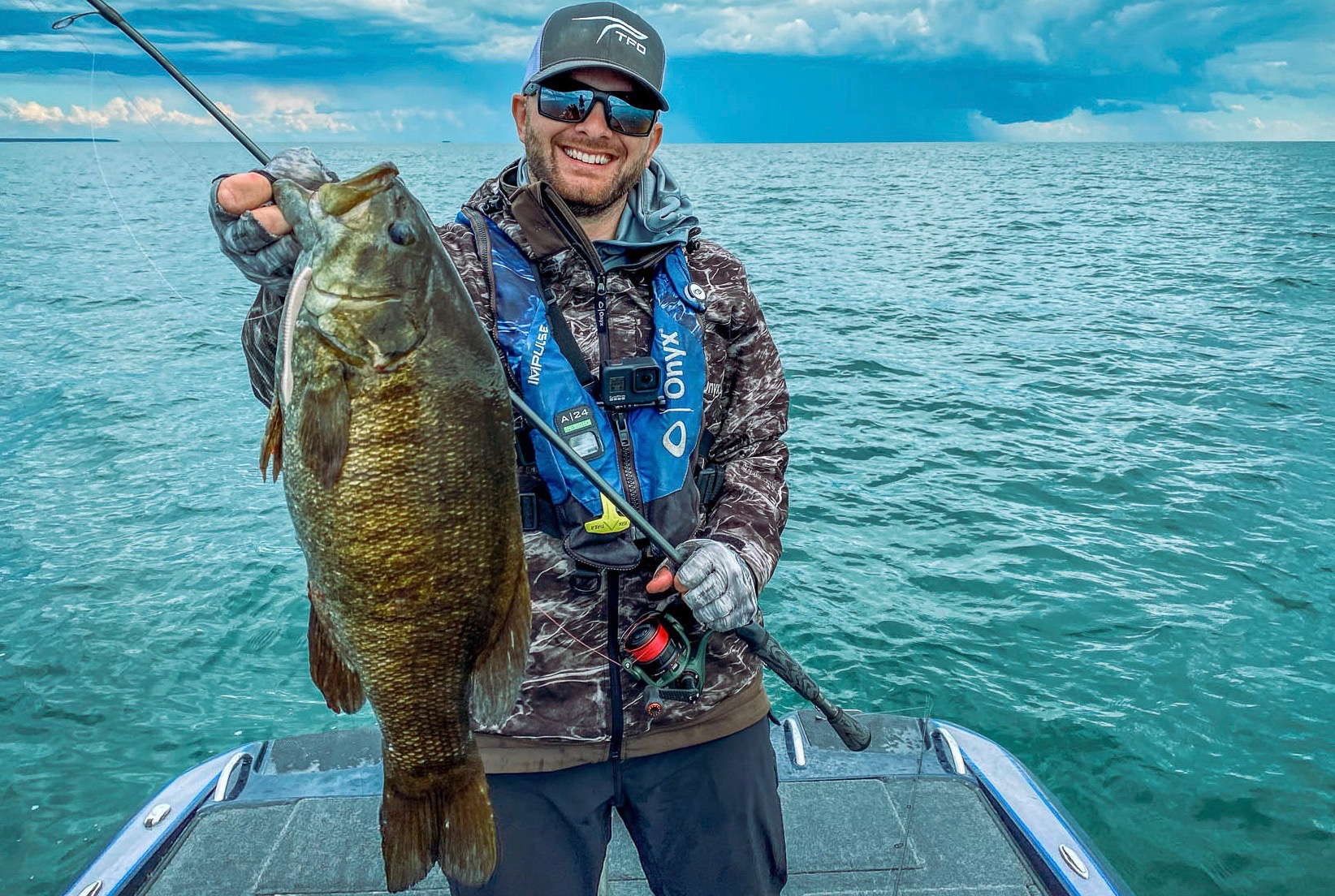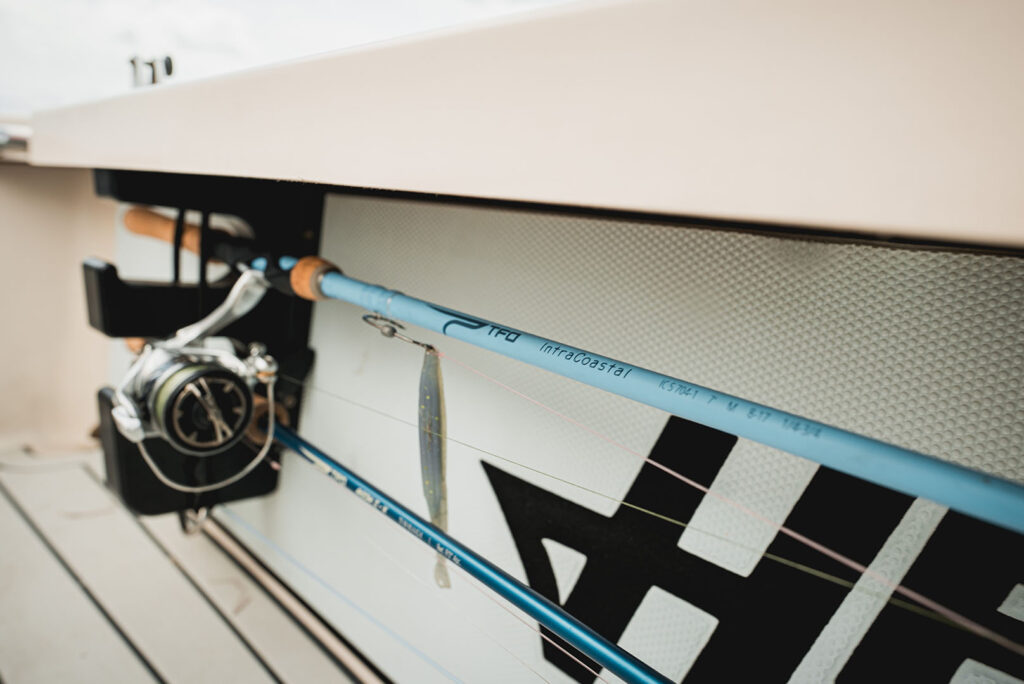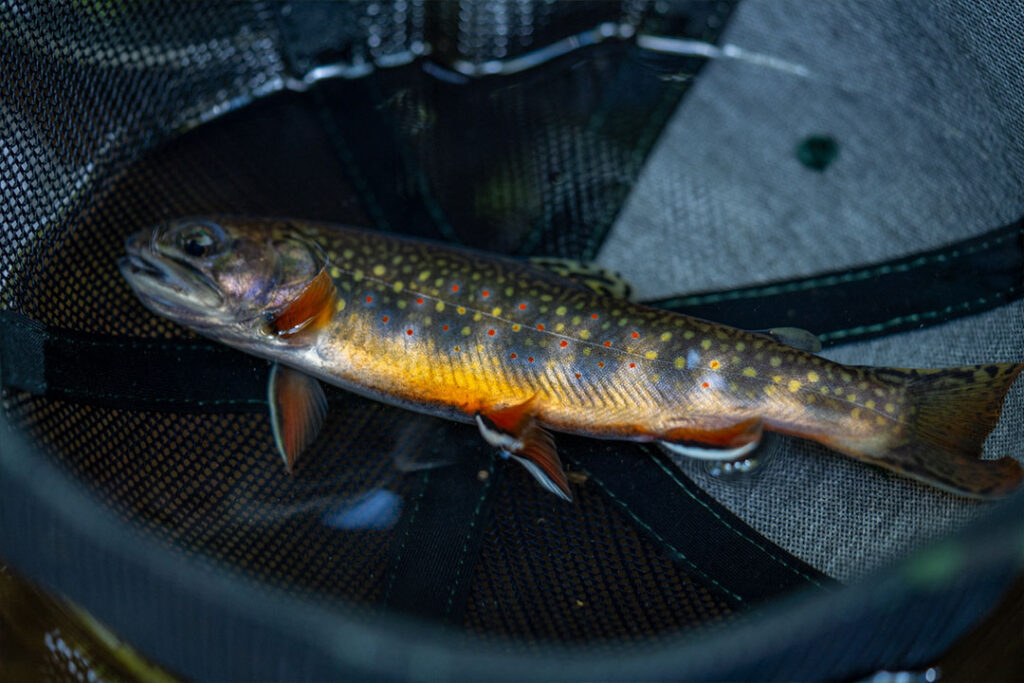TFO Ambassador Ben Nowak is no stranger to smallmouth fishing. Based out of Michigan, Ben hosts a YouTube channel called The Smallmouth Experience where he uploads weekly videos sharing his experiences of catching smallmouth bass, as well as helpful tips for anglers out there who want to find more success on the water.
While summer can be a fantastic time to catch smallmouth, the transition into fall is not to be overlooked for catching some serious numbers (size and quantity). While the casual, warm weather anglers are storing their boats for next summer, anglers like Ben are taking advantage of the less crowded lakes in Michigan, and finding success on migrating baitfish near the banks.
As we begin to move into fall, we decided to catch up with Ben on how he adjusts his tactics and setups for catching more fish.
Tell us about your home waters and what tends to happen as we transition into fall. What temperature fluctuations do you see, how does it effect the fishes’ behavior and location?
I spend a lot of time fishing on Lake Huron, Lake St. Clair, and several other glacial bodies of waters in Michigan. Up here, the biggest thing is we are starting to get a lot colder nights. You go from the summer time where you’ll have 80 degree days with 65 degree nights, and now we’re transitioning into 60 degree days with 35-40 degree nights. As the air temps drop, this causes bait fish to push shallow and into the grass or up into the rock piles in the shallow water situations.
My favorite part of this is when the fish wish will start to move into the river mouths, and they’ll push up and congregate at the first piece of cover or structure (drop off, rock pile, or grass patch) they come to. This, to me, is when it’s the most fun, because in the summer, a lot of our fish can get really tough because they spread out a lot more. As it gets cooler, locating fish is a lot more predictable, and you can get into some serious numbers when you find that first really hard piece of structure outside of a shallow grass flat or river mouths. Typically they’re in 15 feet of water or less located next to something pretty obvious such as grass patches or boulder fields with some sort of drop off. This is where my 5 fall baits and specific TFO rods come in handy.

Swimbaits for the win on the 7’4” Medium Heavy Graphite Cranking Tactical Elite Bass. Photo: Ben Nowak
1.) Medium Diving Crank Bait (12-15 foot diving)
I’ll typically use the 7’4” Medium Heavy Graphite Cranking Tactical Elite Bass rod – TLE LW 74CB-1, or I’ll mix in the 7’4” Medium Heavy Tactical Glass Bass -TAC GB CB 745-1 (Coming This October) depending on how the fish are reacting. The biggest thing is getting the feel for how the fish are eating the bait. I like going with graphite because it has a little bit more backbone, but the glass rod if I want to give it a little bit better before I set the hook is what I go to for that.
For both rods, I’m using 12 lb. test line. Typically, with this set up I’m targeting the medium depth rocks out in front of rivers where you tend to have some of that gravel pushing and those bait fish are kind of pushing up on that gravel. This is probably my favorite approach in the fall because you can usually catch so many fish and it’s just an awesome bite.
2.) Swimbait
For smallmouth, I typically got with a lighter wire swimbait. A lot of anglers are going to want to throw this on a heavier rod, I’m actually throwing it on the cranking rod as well –7’4” Medium Heavy Graphite Cranking Tactical Elite Bass rod – TLE LW 74CB-1. With the light wire hook, you’ll want something that is a bit softer, and for the fish to get the bait a lot better.
This is one of my favorite applications with this rod, because it lets the fish get the bait a little bit better. It also helps me play the fish better. Once again, I’m targeting medium depth rock with some grass.
3.) Wobble Head
I really like to throw these because it’s almost like a compliment to the crank bait – fishing it slower and close to the bottom. I’ll throw this on the 7’5” Heavy Tactical Elite Bass – TLE FS 756-1. I like this rod because it’s moderate. When the fish hit that bait, a lot of the times the fish won’t get that bait the first time they bite it, so you want to let them have the bait a little bit more. The moderate action is going to let those fish get that bait, and you’re not going to tend to lose as many fish on the wobble head. A lot of guys go with an XH (Extra Heavy). For me, a softer and more moderate rod is going to help those fish stay pinned, and have a lot more success.
4.) A Rig
I throw this on the TFO GTS Swimbait Rod 7’11” Mag Heavy. I’m typically throwing a heavy, big A Rig – I’ll throw a seven wire with five hooks and two dummies. So basically, what you’re looking at is three jig heads that are ¼ oz., 2 jigs that are 3/8oz., and two dummies that are empty, non-weighted jig heads. It’s a heavy A rig so I throw it on the 7’11. When those smallmouth hit it, they just absolutely smash it! The rod loads up well, and you can cast it forever.
5.) Finesse Tube
I don’t like to go finesse in the fall, but when I have to, I’ll go to a tube or a ned rig. A lot of the smallmouth fishing I’m doing up here is in clear water, so I want to get that bait super far away from the boat. For this scenario, I’m going with the 7’3” Medium Heavy Tactical Elite Bass spinning rod – TLE MBR S 735-1 and then a 3000 size spinning reel.
The biggest thing is getting that bait super far away, but still having enough power in the rod to drive the hook home. So that Medium Heavy is pretty important. This is about the only (and my favorite) scenario in the fall where I use a Medium Heavy rod.
Ben Nowak is a TFO Ambassador based out of Michigan, where he has lived his entire life. Ten years ago, he started fishing TFO when he was in college, but came back to TFO last winter with the release of the Tactical Elite Bass and Tactical Bass rods. Ben hosts a YouTube channel focusing on catching smallmouth bass. (The Smallmouth Experience). His YouTube channel is all about sharing his experiences of catching smallmouth, but to also help others to be more effective smallmouth anglers wherever these hard-fighting fish.
![]()






